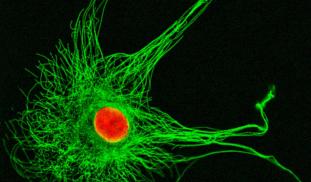Please wait...
About This Project
What if I told you that there exists a natural molecule that changes cancer cells into normal cells? Ever since the War on Cancer began in the 1960s, we have seen attempts to kill cancer cells, though none of these approaches have worked. With the natural molecule that I discovered, methyl sulfone, I am now experimenting with a hypothesis that this molecule can be delivered directly to cancer cells and turn the cancer cells into normal cells.




